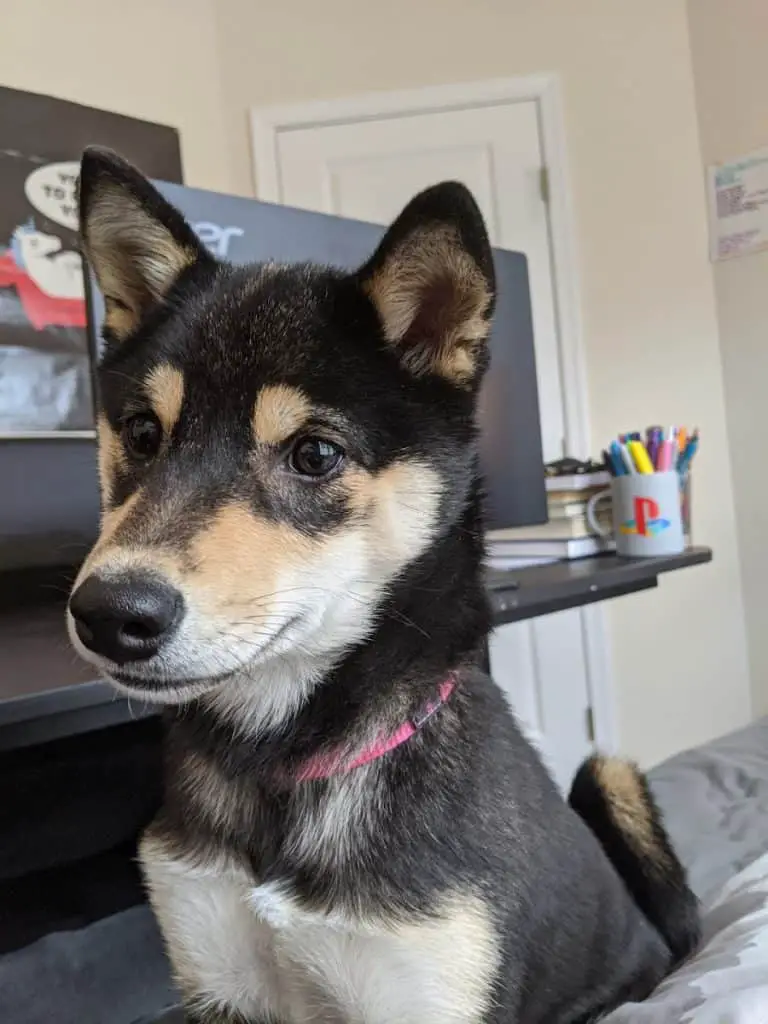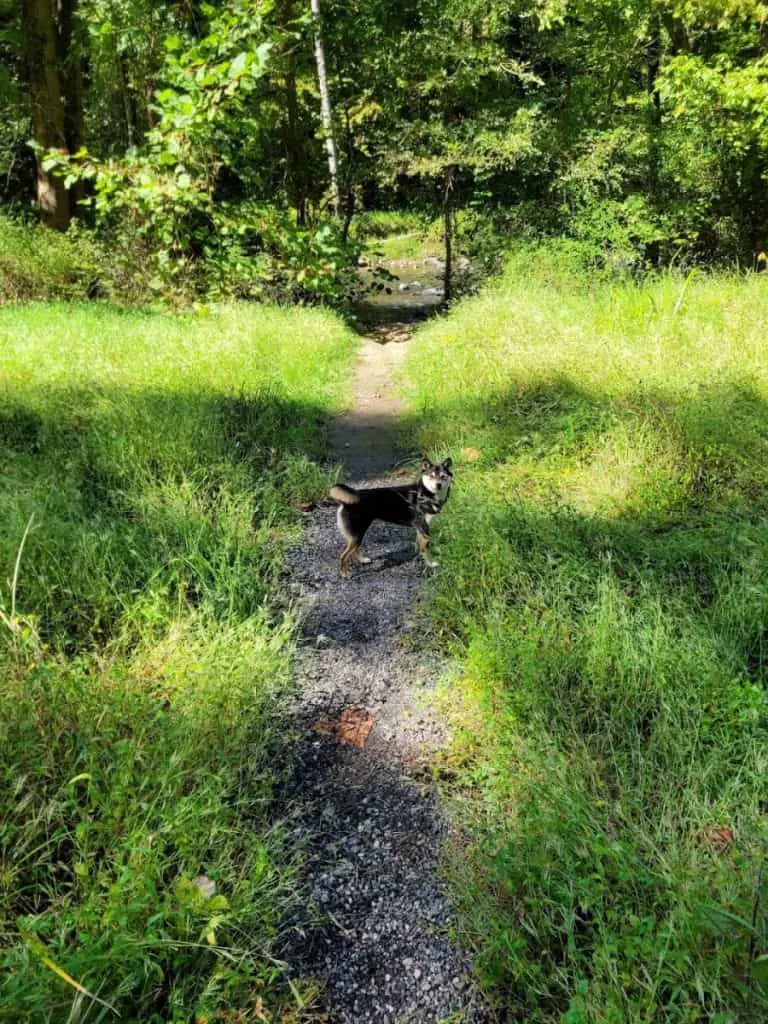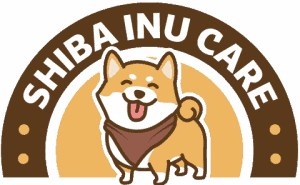This post contains affiliate links.
I have seen many a Shiba Inu and always wondered why some looked like stuffed animals while others looked like they were on a diet. After several questions and some research, I finally started to understand, and boy was I surprised how much played into it.
Most Shibas can be fluffy, but some may need a little help. Shiba Inus have an adaptable coat that helps regulate body heat. A colder place leads to a thicker fluffier coat which helps them stay warm, even in snow, while warmer climates lead to a thinner and flatter coat that helps keep them cool.

Heat is not the only factor when it comes to getting a Shiba that both looks and feels like a teddy bear. Things like genetics, grooming, and diet also play a key role. Let’s get into some specifics.
Genetics Is Always A Factor
No matter what you are talking about genetics will always have a role, big or small, and a Shiba Inu’s coat is no different. While Shibas have a naturally fluffy look to them, some have a bigger fluff factor than others, let me explain. There are actually 4 different fur types for this breed:
Standard
- The average Shiba Inu has guard hairs, the first coat, which are roughly 1.5 to 2 inches long, with an undercoat, the second layer of fur, that is closer to the skin.
Long Haired
- While uncommon long-haired Shibas are not rare. They have a normal undercoat, but the guard coat is well over 2 inches long, normally at or just over 3 inches in length.
Fun fact – Most Shiba Inu show dogs carry the long hair gene.
Short Haired
- Shibas with an outer coat under 1.5 inches are called short hairs. This is typically caused by a mixture of poor genetics and less-than-desirable breeding practices.
Wooly Haired
- The rarest coat type for this breed. A wooly-haired Shiba has a very thin guard coat but an extremely thick and plush undercoat.
While each fur type will keep the breed’s signature colors and markings, they play a major role in what your dog is capable of. The type of fur your dog has is the foundation you, your dog, and nature have to work with.
How The Environment Impacts Coat Type

Life is all about adapting to survive and thrive, just like how we add or subtract layers of clothing depending on the temperature, your dog is no different.
Shiba Inu have a dual coat for two primary reasons:
1) The outer “Guard Hair” layer helps keep them clean and dry.
2) The inner “Undercoat” layer helps them regulate body heat.
A hotter environment with more sun leads to a dog with a thinner undercoat, helping them stay cool but ultimately giving them a flatter more slimmed-down look.
Inversely, a colder climate leads to a thicker undercoat so your Shiba Inu can stay warm even while playing in the snow.
That doesn’t mean you have to live in the mountains to get a fluffy dog, you actually have a bit of control here. Keeping your home cool will minimize a Shiba’s natural shedding to balance body heat, to an extent. This is something that can help some but is not a magic bullet. Believe it or not, what you brush your dog with plays a big role.
The Brush You Use Does Matter
How you brush your dog plays a major role in how their coat looks, different tools lead to different results. Picking the right brush for your Shiba Inu is important.
De-shedding brushes are amazing when it’s coat-blowing season. Not only do they help keep excess fur off your couch and favorite shirt, but they can help clean up and cool your dog off during those hot summer days. But they are absolutely terrible if you want a fluffy dog.
The special bristles on a de-shedding brush do more than pull out loose hair. They can actually pull out live hair that isn’t ready to come out, which will thin your dog’s coat over time. Making an awful brush to use year-round.
A slicker brush on the other hand only goes over the surface layer of fur, so it only grabs the loose dead hair. Leading to less unnecessary hair loss over time and a happier Shiba as a result, which is why they’re the best type of brush for this breed. I’ll share my personal favorite one below.
HERTZKO Self-Cleaning Slicker Brush
My recommendation: The HERTZKO Self-Cleaning Slicker Brush is a must-buy for every Shiba Inu owner.
Strong points: It’s durable, alarmingly affordable, and due to the plastic tips it doesn’t scrape and tug on your dog’s skin, leading to skin irritation and potential fear or aggression.
Learn more: How To Pick The Best Brush For Your Shiba Inu (Answered) – Roughly halfway down the page.
A Dog’s Health Shows In Their Coat
Constantly eating low-quality unhealthy foods leads to you both feeling and looking unhealthy, just like your pet.
An underfed Shiba Inu that is balding does not look happy, healthy, and especially does not look fluffy.
A proper diet is essential to a happy and healthy dog, which shows in their coat. If solid healthy genes are the seeds for a fluffy dog, then a proper diet is the fertilizer that helps that fur thrive and shine.
Each Shiba is unique and has their own medical quirks. Some have allergies, others have skin conditions, the unlucky ones have eye problems (somewhat common for this breed later on in life), and the rest are normal. If you have a diet that is working for your pet, don’t change it.
But if you notice your Shiba has dry skin, patches of missing fur, or is constantly scratching you should talk to your vet and see if they may have any dietary allergies or deficiencies.
Frequently Asked Questions
At What Age Do Shibas Get Fluffy?
Shiba Inus start becoming fluffy when developing their adult coats. This happens after their massive growth spurts, occurring between three and seven months of age, slowing down substantially from months eight through twelve. Your Shiba Inu will nearly double in size and start becoming fluffy.
Why Does My Shiba Inu Look Different?
Shiba Inu puppies go through a lot of changes between months three and twelve as they become an adult. It’s not uncommon for a Shiba’s coat color or pattern to change, their size to roughly double, their snout to grow longer and more pointed, and their ears to grow and develop pointed tips.
Why Is My Shiba’s Tail Not Fluffy?
Shiba Inu puppies typically have long, slender, non-fluffy tails. That changes as they hit growth spurts between months three and twelve, where their tails will become longer and puff up like a feather duster. Adult Shiba Inus are well known for having curled fluffy tails.

